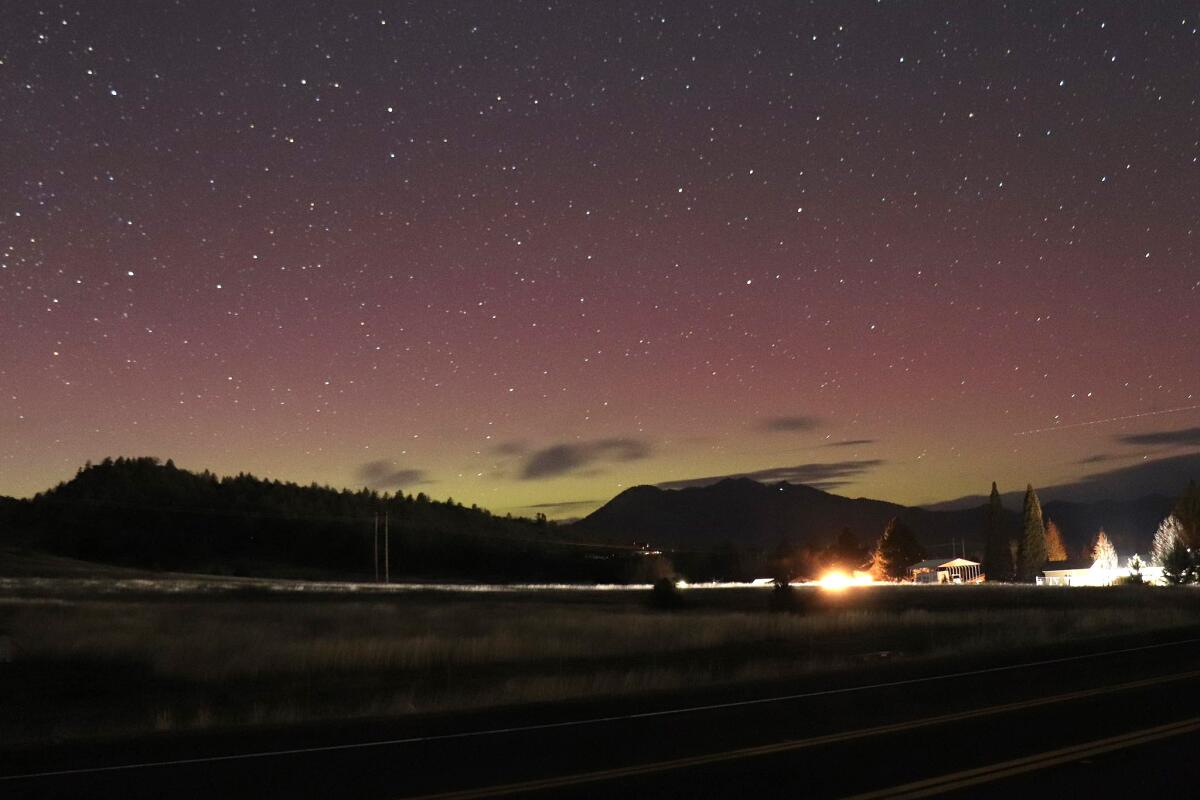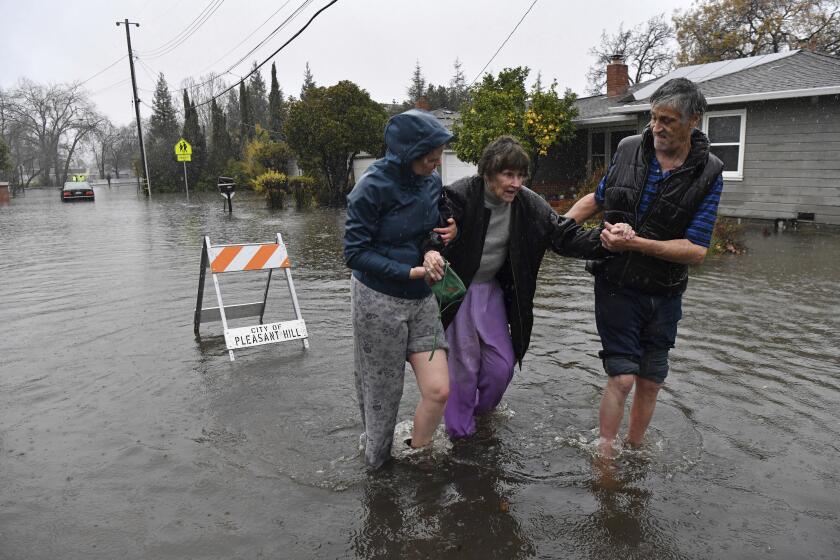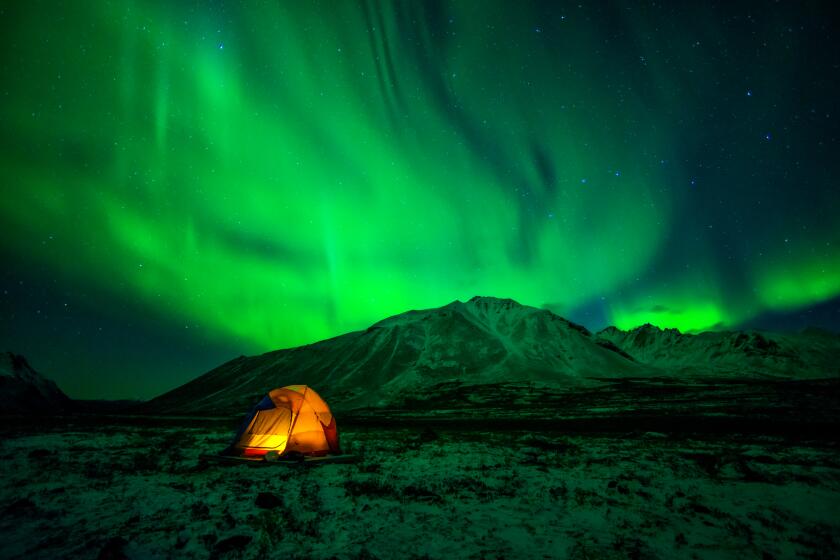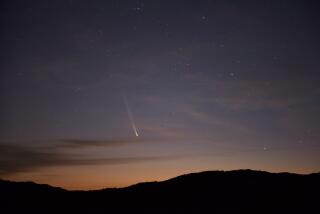Some Californians saw a rare display of the northern lights. Here’s why it happened

- Share via
University of Washington senior Anthony Edwards was headed back to Seattle from a spring break road trip to the San Francisco Bay Area when a friend mentioned he might be able to see the northern lights from as far south as California late Thursday.
From his hotel in Yreka — not far from the Oregon border — Edwards drove a few minutes east to try to escape any man-made light that could interfere with his view of the phenomenon, scientifically known as the aurora borealis.
Before he made it even a few minutes out of the small Siskiyou County town, he said he began to notice a green hue along the horizon.
NASA released findings Thursday that indicate magnetic explosions about one-third of the way to the moon cause the northern lights, or aurora borealis, to dance across the sky in spectacular shapes and colors.
When he stopped a little farther out, he said the green light was really noticeable, and his camera was able to pick up some of the purple.
“I wasn’t expecting it yesterday,” said Edwards, who describes himself as a weather enthusiast and is studying meteorology and journalism in college. “Seeing it for the first time this far south is crazy. … It was awesome.”
Space weather experts had predicted that a “severe geomagnetic storm” Thursday evening might make the northern lights — typically only seen in regions close to the North Pole — visible to a much larger geographical area, as far south as Northern California and even northern Alabama.
“We really haven’t had anything like this in several years,” said Bill Murtagh, program coordinator for the Space Weather Prediction Center in Boulder, Colo., part of the National Oceanic and Atmospheric Administration. “The aurora was indeed visible in the mid-latitude states.”
An atmospheric river pummeled Northern California on New Year’s Eve as another Pacific storm moves in to drench the state later this week.
While he called the southern showing of the northern lights “fairly rare,” it’s not unheard of. The most recent such display occurred in 2017, he said.
Photos of Thursday’s spectacular showing were shared across social media, from Idaho to Wisconsin, and even farther south in Colorado and Virginia. Highly sensitive cameras can often capture the display even farther south when it can’t be seen with the naked eye, said Murtagh, who noted the skies have to be clear to view the phenomenon.
As a Seattle native, Edwards said there have been a few times the northern lights were visible in his area, but it’s always been too cloudy for him to catch them.
The northern lights are the result of electrons streaming from the sun colliding with gases in the upper reaches of the Earth’s atmosphere, typically following the magnetic field toward the North Pole, according to the Space Weather Prediction Center.
But when space storms occur — as they did Thursday — the spectacular lights can extend farther toward the equator, the center said.
This week, there were some eruptions on the sun, which created a geomagnetic storm, disrupting the Earth’s magnetic field — and in turn initiated the display of the northern lights, according to Murtagh and his team. Over the next two to three years, as the sun enters a period of its greatest activity within its 11-year cycle, he said he expects additional eruptions as well as sun spots, which will likely cause more frequent geomagnetic storms.
“As we approach the [solar] maximum, we’re going to see a lot more of these,” Murtagh said. “We could have more magnetic storming in the next 12 months.”
Is seeing the aurora borealis on your bucket list?
He said his team is also monitoring “increased solar winds” — part of an unrelated but similar magnetic disturbance — that could make the northern lights again visible at unusually southerly locations Friday and Saturday, though not as far as California.
“The Aurora viewing opportunity has not ended,” he said. “The more spectacular part has ended, but we may see Aurora in more northern-tier [areas] over the weekend.”
He said the show could be seen Friday and into the weekend in more northern states, like Wisconsin or Idaho.
More to Read
Sign up for Essential California
The most important California stories and recommendations in your inbox every morning.
You may occasionally receive promotional content from the Los Angeles Times.













